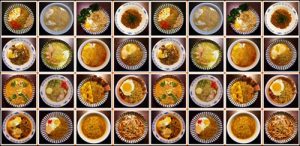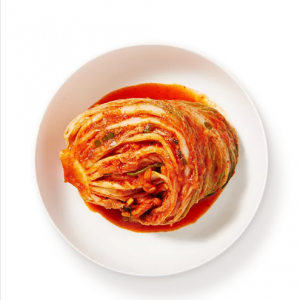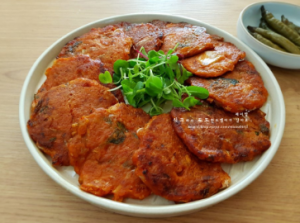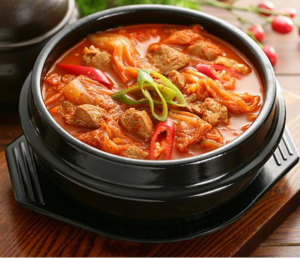Ageing Master Craftsmen
Eunho Seo
Blog 2
CHN 375W/ ITAL 376W
In Tokyo Japan, there was a master craftsman of knife making. He was 70 years old and he was running his small and worn forge with his young son. The blacksmith’s workshop has been inherited by his father, grandfather, great grandfather… and so on. And he was also planning to hand down the forge and recipe for his reputable knives to his son. He was already excited about his son working with him, hammering the molten metal together to produce the masterpiece. The secrete method was nothing but putting more effort and time to repeat hand hammering for numerous times, which other blacksmiths simply replaced the process with machines. Still, his knife was respected by the renowned chefs in Tokyo.
Even though the blacksmith made his knives with full pride, his son always complained about the slow and arduous process of making the knives. One day, the son told the blacksmith, “I want to get a job in the knife factory and learn the easier way to make knives. This way, we can make more money and supply more knives to people.” Despite his father’s persuasion, he was very stubborn about his plan and started to pack his belongings. The blacksmith was extremely upset with his son’s idea, but he had no power left to run the forge alone. He got sick from sadness and decided to stop producing the knives.
One of the chefs in Tokyo visited the blacksmith to purchase a knife. The chef was very famous in Tokyo for making the best sushi in Japan and he owned 8 restaurants only in Tokyo. And the chef has been only using the knife that he bought from the blacksmith but this time, he realized that the old man can’t produce the knives anymore. The blacksmith told the entire story about how his ancestors started the business and ran it till today but it had to be closed because of his son’s different perspective on making knives. The chef quietly listened to his story and told the blacksmith that he will return at night when the blacksmith’s son come back from work at the knife factory.
Later that night, the chef returned to the blacksmith’s place as he promised. He brought his cooking tools and some raw ingredients. He quietly set up his cooking tools in the blacksmith’s kitchen while the son was excited to see the famous sushi chef in his house. Oddly, the chef brought two knives and he started to slice the tuna with one knife and made a sushi. The son asked, “What is the other knife for?” The chef didn’t answer; he instead used the other knife and made the same tuna sushi on the other plate. He bluntly said, “Taste both sushi and tell me how they taste.” With curiosity in his eyes, the son ate two sushi as the chef instructed.
“They taste differently! How is this possible? I thought they were made out of the same ingredients. The one I ate first tastes much better than the other one.” said the son. He started to browse among the cooking tools but didn’t quite find the answer for the mystery. The chef finally opened his mouth, “The first piece you ate was the one that I cut tuna with your father’s knife. But the second piece was cut by the knife that was produced in your knife factory.” The son still looked bewildered. “Convenience is important. And mass production is also important to lower the cost. But the key recipe for making anything, like sushi that I make, is the earnestness of the producer and that is why I became the best sushi chef in Japan. And your father’s knife also has his soul in it and that is why the first piece tastes better than the second piece.”
In the early morning of the next day, the son started fire on his father’s small and worn forge. The blacksmith looked at his son through a window and took his hammer with a huge smile on his face.
From the story, we can learn that not everything made with modern technology is the best way to produce especially for things related with food. Throughout the course, we learned that food conveys lots of meanings. There are history, family, and culture behind the food and machine production may lose some of the messages that are embedded in the food. In the class video, ‘The Art of Making Noodles by Hand,’ it talks about how young people in the town of China prefer machine produced noodles as it is more convenient and therefore no young people in the town wants to learn how to make noodles by hand. After watching the video, I felt bitterness about disappearing traditions in the world. Through globalization, the originality of a nation tends to mingle with another country’s culture. And I personally feel anxiety whenever I witness the disappearing traditions.
While I was creating this story, I leaned about the young culture of China, which prefers convenience than effort. I understand this changing culture as it is also seen in my own culture. In Korea, there are lots of traditions endangered such as Jaesa, the ceremony to respect spirit, is performed by less and less families. Additionally, Korean national holidays such as Chooseok (Thanks giving) and Seolnal (New Years) merely seems to be like vacations without any cultural meanings. Whenever I witness these evidences of extinguishing ethnic originalities in Korea, I felt inconvenience as if my cultural DNA is also disappearing because of my laziness. By writing this story about the blacksmith in Tokyo, I tried to convey the importance of protecting our cultural DNA from mutation. Technological improvement is significant for the globe, but I hope it doesn’t deteriorate our originalities.




